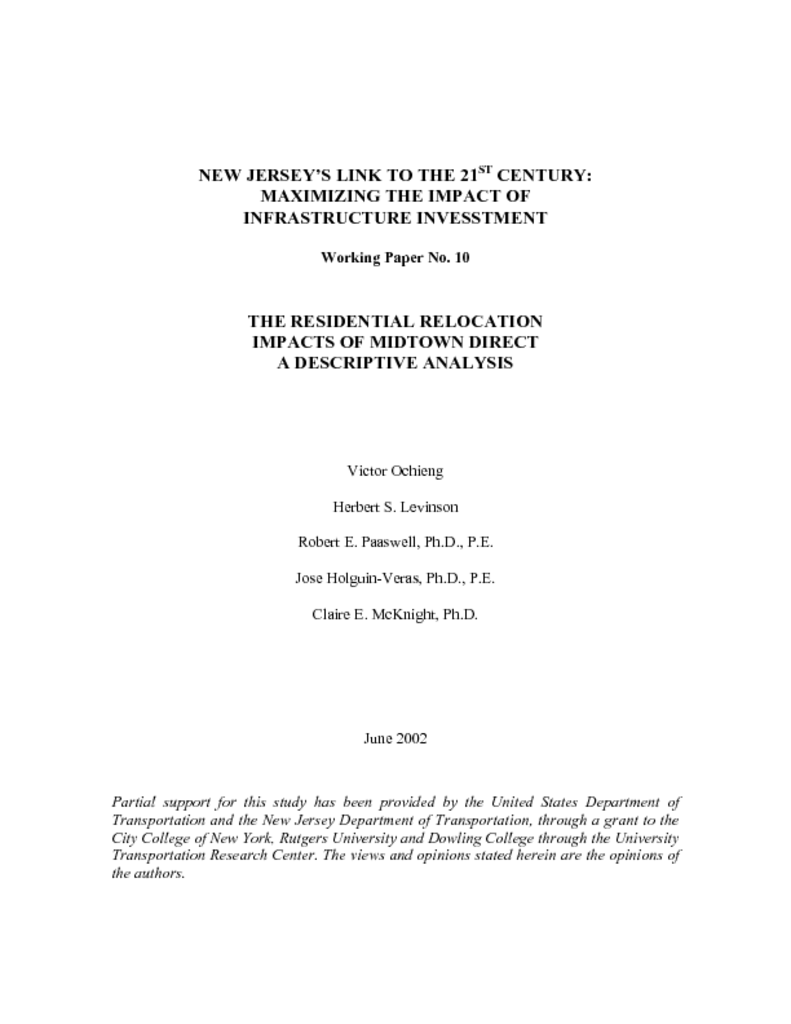<p>This paper presents an analysis of the residential relocations that followed the New Jersey Transit Midtown Direct rail improvement. The increased transit accessibility provided by the Midtown Direct connection reduced one-way commuting travel times by 15-20 minutes between New Jersey and New York. The analysis examines the residential decision-making process of travelers before and after the rail improvement. It is based on revealed preference surveys mailed by City College of New York (CCNY) to 1242 riders in 2001. The decision-making of those who actually moved because of the rail investment are compared with those who said they did not move. In a previous survey by New Jersey Transit (NJ Transit), 8% from 6,000 commuters stated they moved because of the initiation of Midtown Direct. Accessibility to work, school, and services, neighborhood security, real estate values and other attributes were assessed for their likelihood in determining the propensity of people to relocate their residences. The study shows that fifteen percent (15%) of the respondents stated they would relocate if they could have a travel time saving of 31-45minutes.</p>




